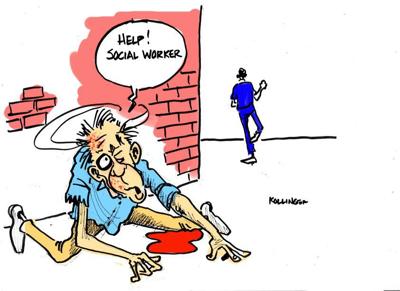When demonstrations triggered by the death of George Floyd spread to Philadelphia, vandals defaced a statue outside City Hall of an old white man. They spray-painted the words “colonizer” and “murderer” on it. But the statue was of Matthias Baldwin, a 19th-century businessman and abolitionist.
Baldwin was a vocal opponent of slavery decades before the Civil War. He founded a school for poor black children and paid the teachers’ salaries for years. He also advocated voting rights for black people well before the enactment of the 15th Amendment. None of this spared his likeness from today’s Jacobins.
Nor was the Baldwin episode an isolated case. Boston protesters painted graffiti all over the Robert Gould Shaw and the 54th Regiment Memorial, including the phrases “Black Lives Matter,” “No Justice, No Peace,” and “Police are Pigs.” Yet that memorial honored the men who comprised the first blacks to fight in uniform for the Union Army during the Civil War. Their heroism was captured in the 1989 film “Glory,” for which Denzel Washington won an Oscar. In Philadelphia, too, vandals defaced the Tomb of the Unknown Soldier of the American Revolution, with the graffiti “Committed Genocide.” Overseas, Winston Churchill’s statue in Parliament Square was defaced and then covered for its protection by a large metal box. The British government cannot be confident that the nation can celebrate the leader who, more than any other, stood up to fascism.
The debate over symbols of the past is legitimate, but what we have are indiscriminate attacks on all elements of our shared history. Today’s vandals are not really attacking evil; they’re attacking the past. It’s one thing to argue against honoring the Confederacy either because it fought against the United States or because it fought to preserve slavery or both. It’s quite another to destroy things simply because they date back to a time you cannot remember and cannot be bothered to find out about. The first is a reasonable argument; the second is nothing but malignant violence.
Debates over removing monuments should happen in public, overseen by elected officials. When the debate is given over to the mob, you get the sort of general vandalism that we see now. Taking down statues of Confederates is different from targeting those of America’s founders, such as George Washington and Thomas Jefferson, who owned slaves but are celebrated for other achievements in the nation’s founding and for the advancement of liberty.
Wanton attacks on symbols of the past are partially rooted in ignorance. Given how much schools and colleges focus on racism in America’s history, it’s no surprise that the mob assumes any old statue it sees must be of somebody irredeemable. The trend also fits the concept seen in other revolutions from the French Revolution to the Khmer Rouge of trying to erase the past and starting over from Year Zero. Today’s street vandals call the police “pigs,” but who are those displaying porcine ignorance, and who behave most like the pigs of “Animal Farm,” making no distinction between innocence and guilt?
In a civilized debate, people can discuss the nuances of who we choose to honor and who, because fellow citizens want to honor them, we should accept in the interests of reconciliation and national unity. Such a debate would recognize that history is messy and that some people who achieved great things were also deeply flawed. It would also provide an opportunity for all sides to feel heard and make any decisions more sustainable. Lawlessness short-circuits this process, which is part of the extremists’ purpose.
REPRINTED FROM THE COLORADO SPRINGS GAZETTE
